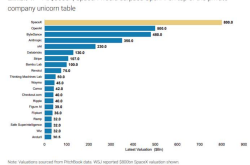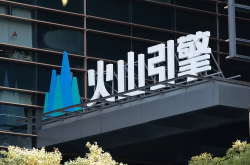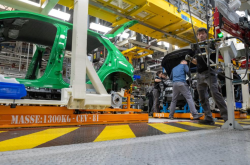DJI Lands on Solid Ground, Insta360 Soars to New Heights
![]() 08/12 2025
08/12 2025
![]() 666
666

Key Points:
1. DJI and Insta360 are standout brands in China's consumer electronics sector, each defining and leading their respective global markets. Now, these two seemingly parallel companies are encroaching on each other's territories.
2. DJI's Wang Tao and Insta360's Liu Jingkang share a passion for product innovation, but their personalities couldn't be more different. Wang Tao's deliberate low profile shrouds him and DJI in mystery, while Liu Jingkang is an outgoing and vibrant leader.
3. "When a company's market share exceeds 50%, double growth becomes elusive." Both DJI and Insta360 are seeking new growth opportunities in each other's "first curve."
4. DJI faces the challenge of excelling in social and content ecosystems, while Insta360 must overcome significant technical barriers to succeed in the drone market.
Author: Li Yue
Editor: Keyun
DJI and Insta360 are trailblazers in China's consumer electronics sector, each carving out a niche in the global market.
DJI reigns supreme in the consumer drone market, while Insta360 pioneered the 360-degree panoramic action camera market. Both brands hold over 80% of their respective global markets, with 70% of their revenues coming from overseas.
Now, these two companies are venturing into each other's territories.
On July 31, DJI launched the Osmo 360 panoramic camera, priced at 3799 yuan, directly targeting Insta360's core market. This is not DJI's first foray into ground imaging equipment, but it marks the first time they have launched a panoramic camera with such targeted technology and form.
Almost simultaneously, Insta360 announced the launch of its new panoramic drone brand, "Antigravity," through a collaboration with a third party, aiming to "redefine" the flying experience. This is Insta360's first attempt to extend its imaging capabilities to the sky.
DJI, the master of the sky, is descending, while Insta360, the groundbreaker, is determined to rise.
Why are these two companies encroaching on each other's territories when their respective "first curve" growth is still robust? How can they carve out a share in each other's most proficient areas?
Wang Tao and Liu Jingkang: Two product enthusiasts with contrasting personalities
DJI's Wang Tao and Insta360's Liu Jingkang share a deep passion for product innovation, but their personalities couldn't be more different.
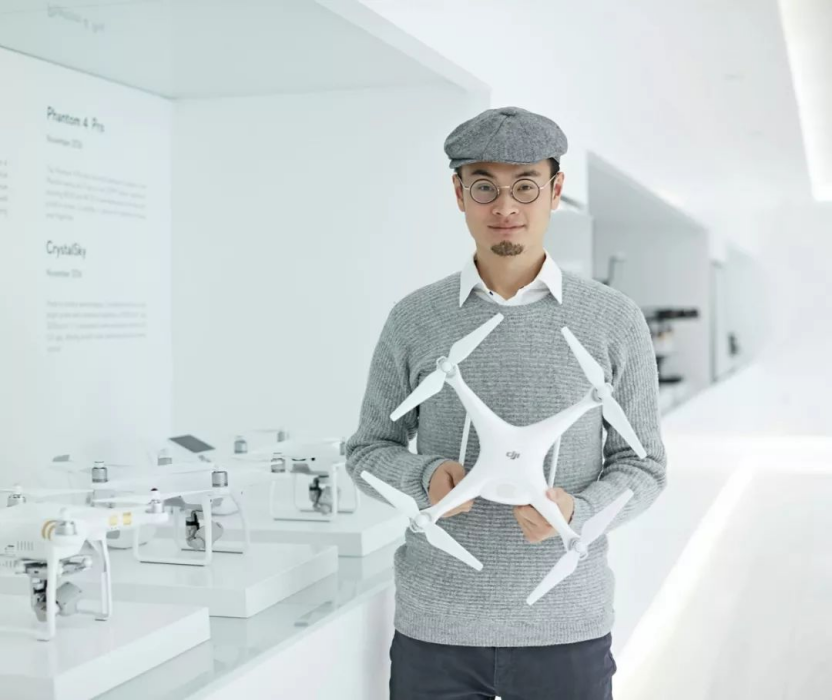
Wang Tao rarely makes public appearances. According to Tencent Tech, he strictly prohibits the dissemination of his photos within DJI. The few high-definition photos of Wang Tao available online are often misused by media outlets and are not authentic. This deliberate low profile shrouds him and DJI in mystery.
This mystique extends to DJI's product development process. Wang Tao is the ultimate decision-maker, and it's rumored that he personally cancels numerous projects. DJI has a strict attitude towards products, with a low tolerance for imperfections and failures. If a product doesn't meet the standard, it's better not to launch it than to subject it to "A/B testing."
This has shaped DJI's brand image of "when it acts, it must be a masterpiece." From the "Phantom" series that defined consumer drones to the "Mavic" series that ushered in the era of foldable drones, and the Ronin series that led the handheld gimbal market, DJI's every step has been exceptionally solid and precise.
Beyond serious business decisions, Wang Tao also demonstrates an idealistic technical sentiment. DJI's robotics education business is a testament to this. Whether it's the heavily funded RoboMaster competition for college students or the charitable robotics summer camp for high school students, DJI's investment is altruistic.
An insider once revealed: "The boss (Wang Tao)'s idea is that this business must be done regardless of profit, and it must be done well." Behind this is a top engineer's pure obsession with cultivating the next generation of technical talent.

In contrast, Liu Jingkang, the 1991-born founder of Insta360, is vibrant and outgoing, embodying the modern imagination of a "new generation entrepreneur." He personally appears in interviews with media and video bloggers, sharing Insta360's story and his product vision with clarity and sincerity. At Insta360's product launches, he personally presents and explains every detail and the story behind each product.
If Wang Tao's extremity is embodied in "subtraction," cutting out everything imperfect, Liu Jingkang's extremity is more about "addition," continuously expanding product boundaries through creativity and gameplay.
In the early stages, Liu Jingkang led his team to turn the niche category of 360-degree panoramic cameras into a global leader through technological innovation and a deep understanding of user needs. They solved pain points such as panoramic video stitching, stabilization, and post-editing, allowing ordinary users to create "cool" shots with ease, previously requiring professional equipment and complex post-production. This "hardware + software + community" model has built a solid foundation and brand moat for Insta360.
Wang Tao and Liu Jingkang have shaped two companies with vastly different temperaments. DJI is like a disciplined heavy-armed corps, planning and acting methodically, pursuing a decisive strike. Insta360 is more like a flexible and agile special forces unit, iterating rapidly and excelling at guerrilla warfare and surprise attacks.
Now, these two men with contrasting personalities are simultaneously eyeing each other's territories.
Landing and Taking Off: Both Eyeing Each Other's First Curve
Peter Norvig, former director of Google Research, proposed that "when a company's market share exceeds 50%, it can no longer achieve double growth." This theorem underscores the need for enterprises to expand or transform to maintain growth.
Therefore, any company at the pinnacle of its industry must ask: where is the next growth point? For DJI and Insta360, each other's "first curve" is the answer.
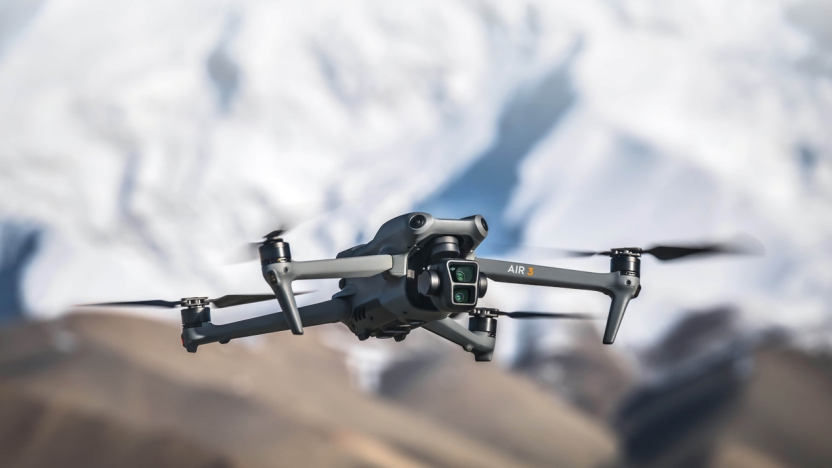
DJI has long been the "unrivaled" leader in the consumer drone market. According to public data, its global market share has been stable at over 70% for years, exceeding 80% in some high-end markets. This absolute leadership position also signals the approaching growth ceiling. The consumer drone market has transitioned from explosive growth to a period of relatively stable stock replacement.
In the past two to three years, new product iterations in DJI's consumer drone lineup have mostly been routine performance upgrades, akin to "squeezing toothpaste" in the smartphone sector, lacking revolutionary breakthroughs. This is not due to stagnation in DJI's technology but a result of both market demand and technological bottlenecks. When a category's form and function are defined to the extreme, any minor innovation requires enormous research and development costs.
Growth anxiety drives DJI to seek new territories. Handheld imaging devices are the closest and most logical battlefield. From the Osmo handheld gimbal to the Osmo Action sports camera, DJI has been trying to "land." The launch of the Osmo 360 panoramic camera is a more targeted offensive. (Of course, DJI has also ventured into robotic vacuum cleaners with ROMO, but we'll set that aside for now.)
A panoramic camera is not just a technology-intensive product but also an entry point into a content ecosystem. Its user profile highly overlaps with that of DJI drone users - outdoor enthusiasts, travelers, and video creators. DJI hopes to use a similarly dominant imaging product to deepen its engagement with these users, providing a full-scene imaging solution from the sky (drones) to the ground (handheld devices).
For Insta360, challenging the sky is a "must-fight" upward battle.
In an interview with "LatePost," Liu Jingkang was asked, "So the door to the drone market looks welded shut, but can it actually be pushed open?" His response was: as long as you can honestly do everything well.
Behind this sentence lies Insta360's assessment of its capabilities and market opportunities.
Although Insta360 is much smaller than DJI, it has completed key strategic reserves.
DJI's 2024 financial report shows that its annual revenue exceeded 80 billion yuan, with a year-on-year increase of 35%, and a net profit of 12.056 billion yuan. It's a technology giant with strong technology, solid barriers, and robust profitability.
Insta360's revenue and net profit attributable to shareholders in 2024 were close to 5.6 billion yuan and 1 billion yuan, respectively. This is a remarkable achievement for a company that has been established for less than a decade. More importantly, its compound annual growth rate in revenue over the past three years has exceeded 65%, and it held nearly 4 billion yuan in current assets in the first quarter of 2025.

Insta360 does not lack money or technical talent. What it needs is a bigger story and broader market space. While the action camera market is still growing, its size is limited, with a visible ceiling and fierce competition from brands like GoPro. In contrast, the market size and value of drones far exceed that of action cameras.
Insta360's confidence stems from its unique advantages in imaging algorithms, stabilization technology, and user experience design. In Insta360's view, the current drone market overemphasizes the "flying" tool attribute and still has vast room for improvement in the fun and convenience of "imaging" creation. Insta360 hopes to use its strengths in "panoramic" and "creative gameplay" to "redefine" the user experience of drones, attracting potential users discouraged by DJI's "professionalism" and "complexity."
In summary: DJI's "landing" is a "strong attack on the strong," leveraging its absolute advantages in brand, technology, and channels to attack a related market. Insta360's "taking off" is "breaking through from a point to a surface," attempting to tear open a gap in a seemingly solidified market with differentiated innovations in imaging gameplay.
New Battlefields, Old Challenges: How to Share a Piece of the Pie in Each Other's Dominant Fields?
Despite their ambitions, both companies face significant challenges in gaining a share in each other's dominant fields.
The challenge for DJI is to excel in "social" and "content ecosystems."
DJI has few technical barriers in making the Osmo 360. Whether it's optics, gimbal stabilization, or image processing, DJI has deep accumulations. However, the core competitiveness of a panoramic camera is not just hardware.
At least half of Insta360's success is attributed to its powerful app. Through AI algorithms, it simplifies the editing process of panoramic videos, providing creative templates like "bullet time" and "moving clones," allowing users to create viral short videos with just one click. Around this app, Insta360 has built an active global creator community where users share works, exchange skills, and form strong brand loyalty.
This is precisely DJI's weakness. DJI's software, whether it's DJI Fly or DJI Mimo, focuses more on tool attributes - stability, professionalism, and reliability - but lacks the fun of "playing" and the warmth of the community. DJI users tend to use and leave, while Insta360 users immerse themselves.
Therefore, the real challenge for DJI Osmo 360 is to create a software ecosystem that is equally easy to use, fun, and creative. Can it humble itself and learn how to operate a young and active online community? This requires DJI, a technology-oriented company, to increase or even shift its focus towards user experience and content ecosystems, which is no easy feat.
The challenge for Insta360 is to overcome significant technical barriers.
Compared to DJI, Insta360 faces more severe challenges in making drones.
Drones are an extremely complex system engineering, not simply cameras with wings. Their core barriers lie in:
Flight control system: This is the "brain" of the drone, determining flight stability, safety, and wind resistance. DJI has over a decade of accumulation in this area, with algorithms validated by millions of users worldwide and hundreds of millions of hours of flight time, forming an insurmountable technical moat.
Video transmission system: It determines how far the drone can fly and whether the image transmission is stable and clear. DJI's OcuSync video transmission technology is crucial to its leading position.
Supply chain and manufacturing: Drones involve thousands of precision components, requiring extremely high standards for supply chain management and quality control. Flaws in any link can lead to fatal flying accidents.
Safety and compliance: Drone crashes are not only a product quality issue but also a public safety concern. Increasingly stringent regulations worldwide are a must for new players to overcome.
Insta360's choice to "co-incubate" a drone brand with a third party is a strategic move, leveraging external forces to compensate for its shortcomings in flight technology and manufacturing. However, this also means that product dominance and integration may be affected.
The success or failure of Insta360's drones hinges on its ability to truly distinguish the imaging experience while ensuring the fundamental requirements of "stable and safe flight." Merely attaching a panoramic camera to a "mediocre" drone will struggle to sway DJI's loyal user base. Reliability, after all, remains paramount in the drone industry. Users may overlook a mundane photograph, but they cannot overlook a device costing thousands plummeting from the sky.
No permanent fortress, only relentless innovators
DJI touches down, while Insta360 soars upwards. This apparent abrupt shift is actually the inevitable meeting point of two exceptional companies on their respective paths of growth.
Behind this lies the timeless rule of the tech industry: there are no enduring fortresses, only relentless innovators.
When a company reaches the pinnacle in a given field, the greatest threat it faces is not imitation from peers but the invasion of "new species" from other realms. For DJI, this "new species" is embodied by Insta360, a revolutionary imaging paradigm powered by software and creativity. Conversely, for Insta360, this "new species" is represented by DJI, a flight platform with robust hardware and software integration and system engineering capabilities.
The outcome of this rivalry may remain unclear in the short term. However, regardless of the result, it is a boon for the entire industry and consumers alike. The entrance of giants will expedite industry innovation, while the emergence of challengers will prevent market stagnation.

